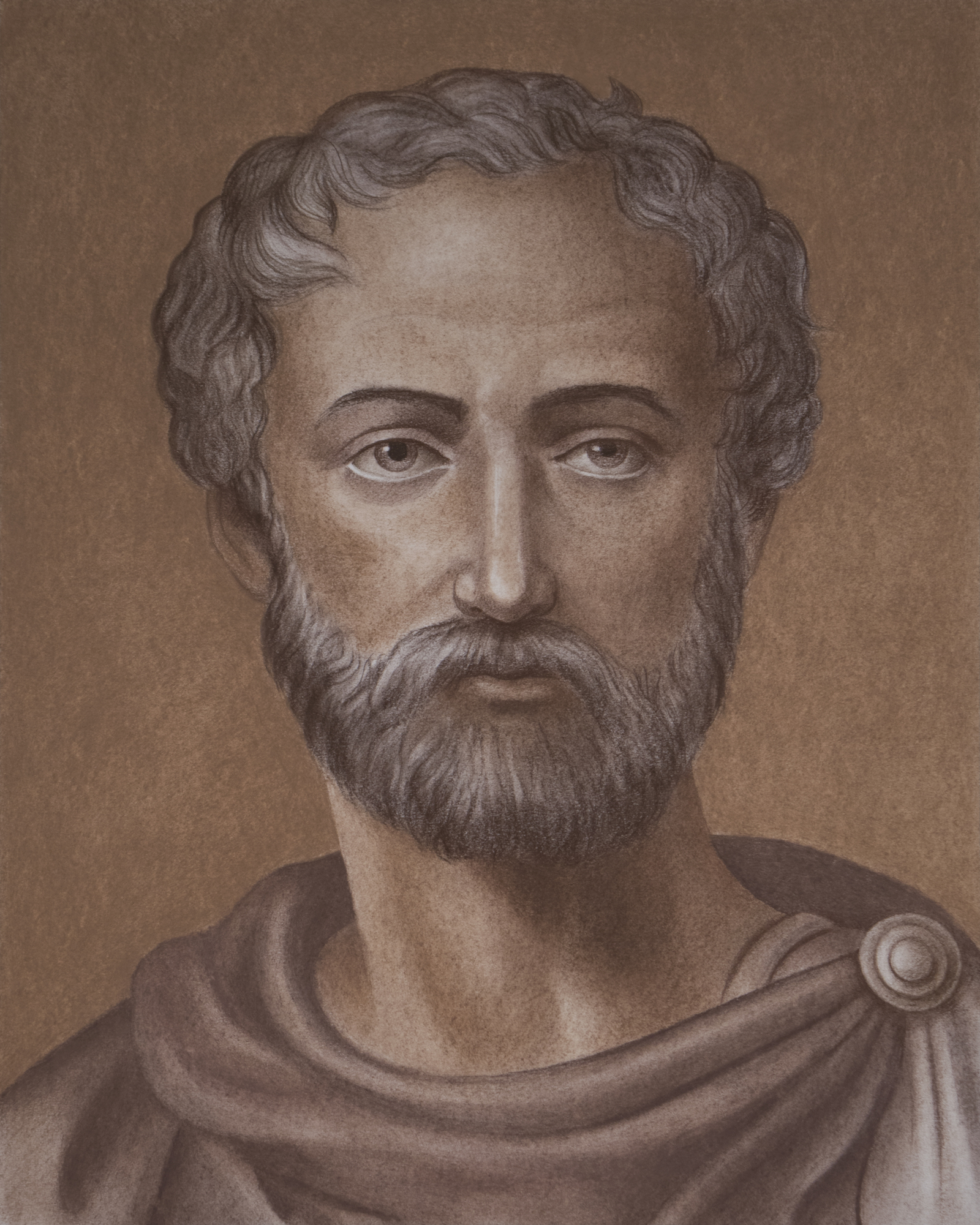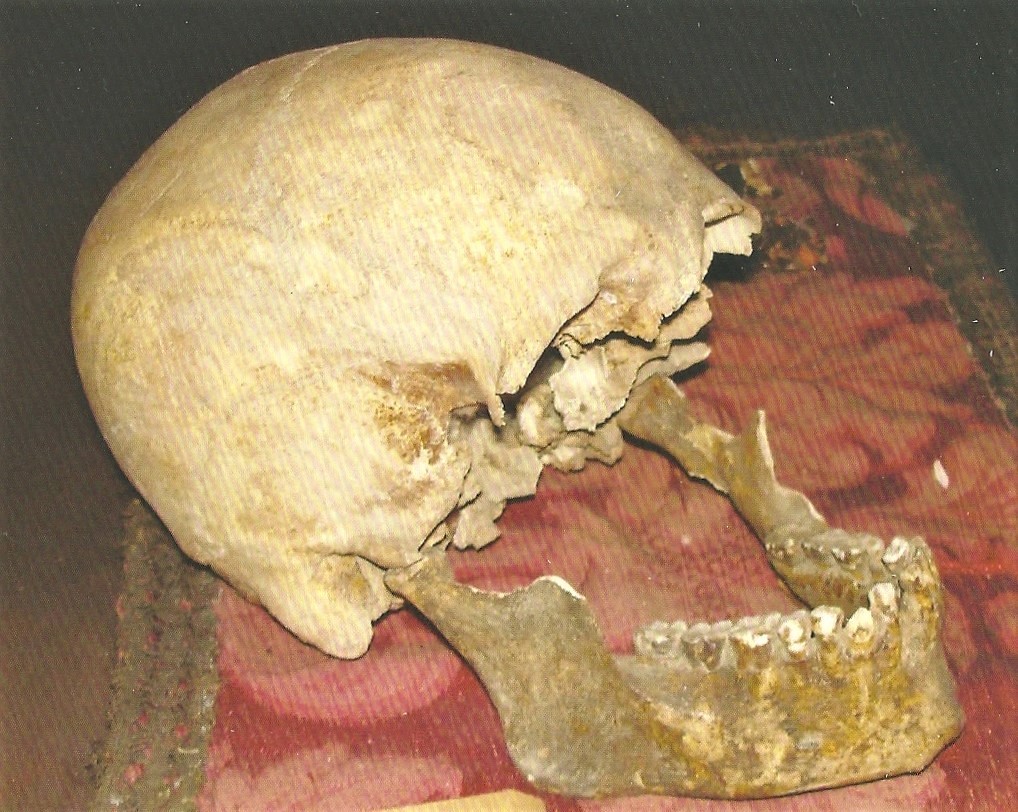Pliny the Elder died in the Mount Vesuvius eruption of A.D. 79. Is this his skull?
New tests offer insight into this skull and jawbone found near Pompeii.

A skull discovered almost a century ago on a shore near Pompeii might, just might, be that of Roman naturalist and military leader Pliny the Elder, new research finds.
The jawbone associated with that skull, however, belongs to someone else entirely.
These findings may finally shed light on the resting place of Pliny, who perished while trying to rescue people from the eruption of Mount Vesuvius in A.D. 79.
Related: Preserved Pompeii: Photos of a city covered in ash

The Pliny mystery
Just before his death, Pliny — also known as Gaius Plinius Secundus, a military leader and author of the influential tome "Natural History" — was fighting pirates in the Bay of Naples, according to Encyclopedia Britannica. When he saw a strange cloud (later found to be the result of the volcano's massive eruption), he heroically directed Rome's imperial fleet southward to Pompeii, where they planned to rescue survivors.
The mission was Pliny’s last. Upon arriving in Pompeii, Pliny was overtaken by volcanic fumes and died on the shores of Stabiae, an ancient Roman town near the volcano. His body, never properly buried, was lost to the ages.
Fast-forward to the early 1900s, when interest in Pompeii's doomsday spiked. At that time, an engineer named Gennaro Matrone found more than 70 ancient skeletons in Stabiae. One of them — a skeleton wearing golden necklaces and bracelets, as well as holding a sword decorated with ivory and seashells — had the potential to be Pliny, Matrone said, according to a 2017 piece by Haaretz reporter Ariel David.
Get the world’s most fascinating discoveries delivered straight to your inbox.
Matrone's idea, however, wasn't taken seriously by academics. Frustrated, he sold the jewelry and reburied the individual's bones, keeping only the skull, a jawbone and sword, Haaretz reported. These remains ended up in Italy at the Museo Storico Nazionale dell'Arte Sanitaria (National Historic Museum of Healthcare Art), where they sat until researchers recently decided to take a second look.

Is it Pliny?
Chemical and age-related clues found in the remains suggest that the skull, but not the jaw, could have belonged to Pliny the Elder.
First, lumps of ash on the skull indicated that it was excavated from a layer of Vesuvius ash — key evidence that the individual died in the eruption, Luciano Fattore, a freelance anthropologist who worked on this project, and who has studied Vesuvius' victims in Herculaneum for more than 20 years, told Live Science in an email.
Research into isotopes in the teeth revealed that the individual spent the first part of his childhood in northern Italy, including Como, where Pliny grew up. Isotopes — variations of chemical elements that have a different number of neutrons than normal in their nuclei — can reveal where people spent their early years, because elements from drinking water end up in tooth enamel, said Andrea Cionci, an art historian and journalist who reported on the findings for Italy's La Stampa newspaper.
Related: Photos: The bones of Mount Vesuvius
Another test, however, had less promising results. After looking at the teeth's dental wear, researchers found that the person died between the age of 30 and 40 — too young to be Pliny the Elder, who died at age 56, Cionci said.
The cranial sutures (where the bones of the skull come together), in contrast, showed that the person was older. One part of the skull suggested the person was between 33 and 58, while another showed he was between 48 and 65. "Both ranges cover the well-known age at death of Pliny," Fattore said.
The different ages of the jawbone and skull raised a red flag. Finally, Fattore announced that the skull and jaw might belong to different people.
"The examination of the temporomandibular joint (the articulations between the mandible and the skull) evidenced that the skull and mandible refer to two distinct individuals," Fattore said. They then confirmed that interpretation by looking at the DNA found in the mitochondria (energy-making cells) of the skull and teeth, Fattore added.
Fattore added that the haplotype (a set of DNA variations that are inherited together) of the skull point toward Roman ancestry, while the mandible "is attributable, among others, to North Africa."
Perhaps, the skull was incomplete when Matrone found it, so he "reassembled the skull by 'borrowing' another jaw," Cionci said.
Whose jaw is it?
Given the jawbone's DNA, it may have belonged to a person with black heritage who also died in the eruption. That idea is plausible, "especially since a third of the Roman sailors were African," Cionci said. However, given that the isotopic analysis revealed this person grew up in Italy, "a hypothesis that would reconcile the data is that the jaw may belong to a second generation Numidae [a person from Numidia, an ancient kingdom in North Africa]," Cionci said, adding that this "is a mere guess."
As for the skull's owner, it's possible it belonged to Pliny; it was from an Italian-Roman person of about 56 years of age, and it was buried wearing riches, Cionci noted.
Fattore, on the other hand, said experts will probably never know whether the remains are those of Pliny. "The only chance to decrease the uncertainty would be to reconstruct the Pliny lineage until today and compare his genome with the one of a clear descendant," he said.
The research, which has yet to be published in a peer-reviewed journal, was presented on Jan. 23 at the Academy of Healthcare Art in Rome.
- In Photos: Ancient home and barracks of Roman military officer
- In photos: A journey through early Christian Rome
- Headless Roman gladiator skeletons identified (photos)
Originally published on Live Science.


Laura is the managing editor at Live Science. She also runs the archaeology section and the Life's Little Mysteries series. Her work has appeared in The New York Times, Scholastic, Popular Science and Spectrum, a site on autism research. She has won multiple awards from the Society of Professional Journalists and the Washington Newspaper Publishers Association for her reporting at a weekly newspaper near Seattle. Laura holds a bachelor's degree in English literature and psychology from Washington University in St. Louis and a master's degree in science writing from NYU.


